Weekly cattle and sheep market wrap
Key points
- National cattle yardings fell 17% to 62,460 head, with Victoria and NSW driving the decline.
- Lamb yardings rose 5% to 183,927 head with increased supply of new season lambs.
- National sheep and lamb slaughter lifted 9% to 536,826 head, the highest weekly total since June.
Cattle market
National cattle yardings fell 17% to 62,460 head. Victoria posted the sharpest decline, down 37%, followed by NSW (–31%), while Queensland slipped by just 3%. In contrast, SA and WA recorded modest increases. The ease in supply follows recent rainfall in parts of NSW and Queensland, which encouraged some restocker retention.
The National Processor Cow Indicator declined 10¢ to 380¢/kg liveweight (lwt). This was largely due to an increased number of plainer-condition stock coming forward, attracting softer demand. A price drop was evident across all eastern states, with Queensland posting the largest decline of 20¢, despite national throughput being back slightly on the previous week.
The National Restocker Yearling Heifer Indicator lifted to 398¢/kg lwt. Buyers competed strongly in NSW and southern Queensland following strong confidence with sustained good conditions. With buyers becoming selective on quality, the Feeder Heifer Indicator was unable to sustain last week’s price and fell 20¢ to 423¢/kg lwt.
Sheep market
National sheep yardings dropped 5% to 86,863 head. With new season lambs starting to flow through, lamb yardings increased 5%, totalling 183,927 head.
The only positive movement this week was the Merino Lamb Indicator, which lifted 3¢ to 1,079 ¢/kg carcase weight (cwt). This lift was despite an increase (2,825 head) in national yardings. The fourth consecutive increase in wool prices has boosted confidence in Merinos, with the Eastern Market Indicator from the Australian Wool Exchange now at 1,292 ac/kg, the highest since May 2023.
The Heavy Lamb Indicator fell sharply, easing 49¢ to 1,141¢/kg cwt, despite national throughput declining to 10,832 head. Softer demand was linked to reduced buyer activity at Wagga Wagga, with Victorian public holidays limiting processor activity and narrowing specifications. This resulted in falls of $10–$20/head compared to the previous week.
Slaughter
Week ending 19 September 2025
Cattle
National cattle slaughter lifted 2% to 151,320 head, 7% above the 2025 weekly average. Growth was driven by strong Queensland throughput, up 3% to 81,186 head, 12% above the 2025 weekly average. NSW had a 4% lift to 34,194 head. Other states saw throughput decline week-on-week (WoW).
State-by-state breakdown of cattle slaughter:
- NSW: up 4% at 34,194
- Queensland: up 3% to 81,186
- SA: down 2% to 3,817
- Tasmania: down 1% to 3,787
- Victoria: down 0.7% to 24,577
- WA: stable at 3,759.
Sheepmeat
National sheep and lamb throughput lifted 9% to 536,826 head. This is the first weekly throughput since June to hit more than half a million. This growth was driven by increased processor activity, with plants operating more days than the week prior, where adjusted operations were seen due to maintenance and low supply. Victoria lifted (+12%) to 237,265 head, followed by WA lifted (+25%) to 77,065 head and SA lifted (+5%) to 55,066 head. The national lift this week closes the gap with the 2025 weekly average (597,943 head) and is now sitting only 10% below.
National sheep slaughter lifted 4% to 153,525 head. This was led by rises in NSW (+1%) to 56,659 head, WA (+32%) to 33,445 head and SA (+13%) to 13,357 head. The increases in these states offset the 6% drop in Victoria, where there is a growing supply of new season lambs. National throughput is tracking 2% below the same period of 2024.
National lamb slaughter increased 11% to 383,301 head, supported by gains in most states, led by strong lifts in Victoria (+18%) and WA (+21%). Tasmania was the only state to decrease – falling 4% to 5,197 head.
State-by-state breakdown of lamb slaughter:
- NSW: up 1% to 103,456
- Queensland: down 1% to 1,336
- SA: up 2% to 41,709
- Tasmania: down 4% to 5,197
- Victoria: up 18% to 187,983
- WA: up 21% to 43,620.
Attribute to: Emiliano Diaz, MLA Market Information Analyst



